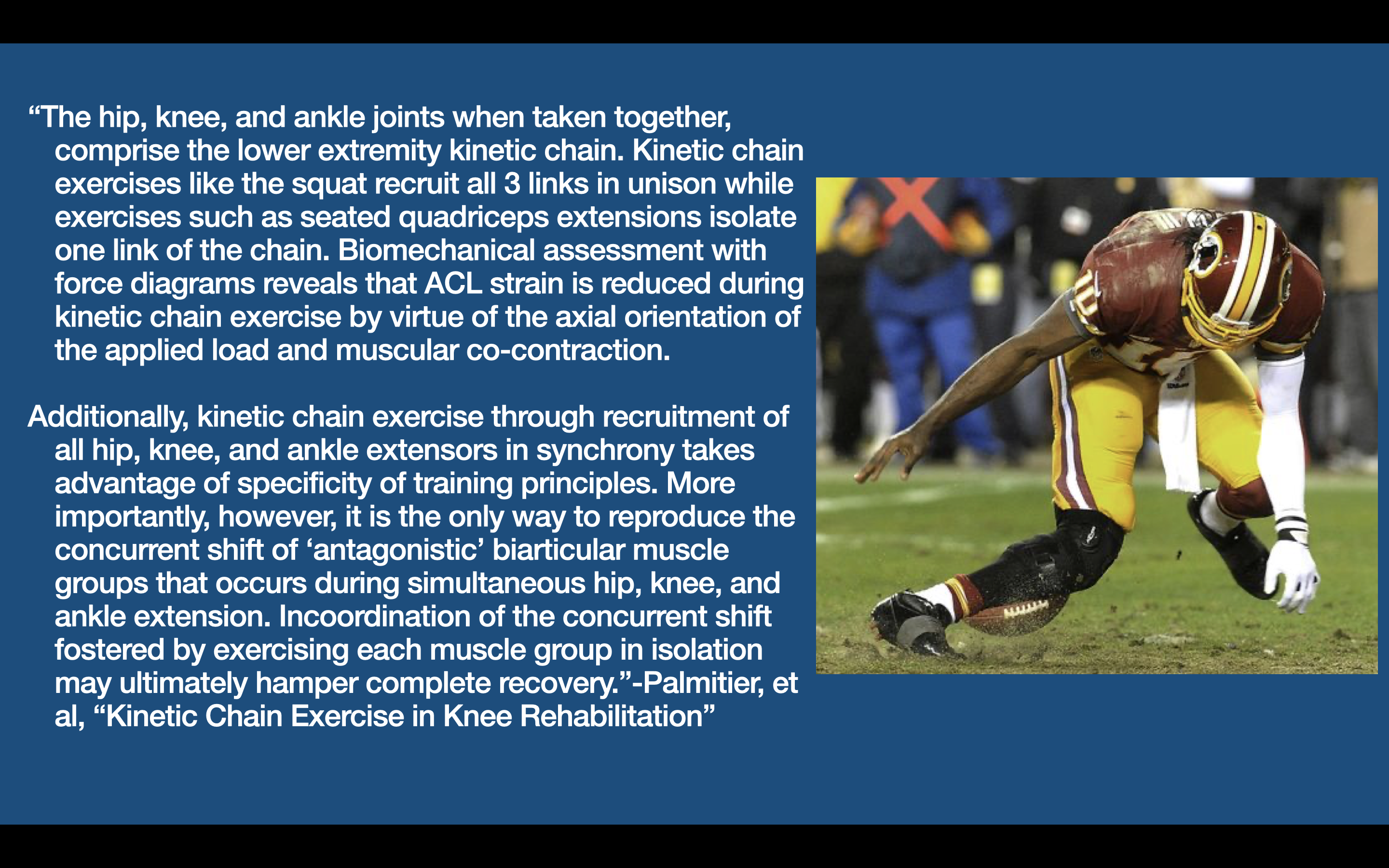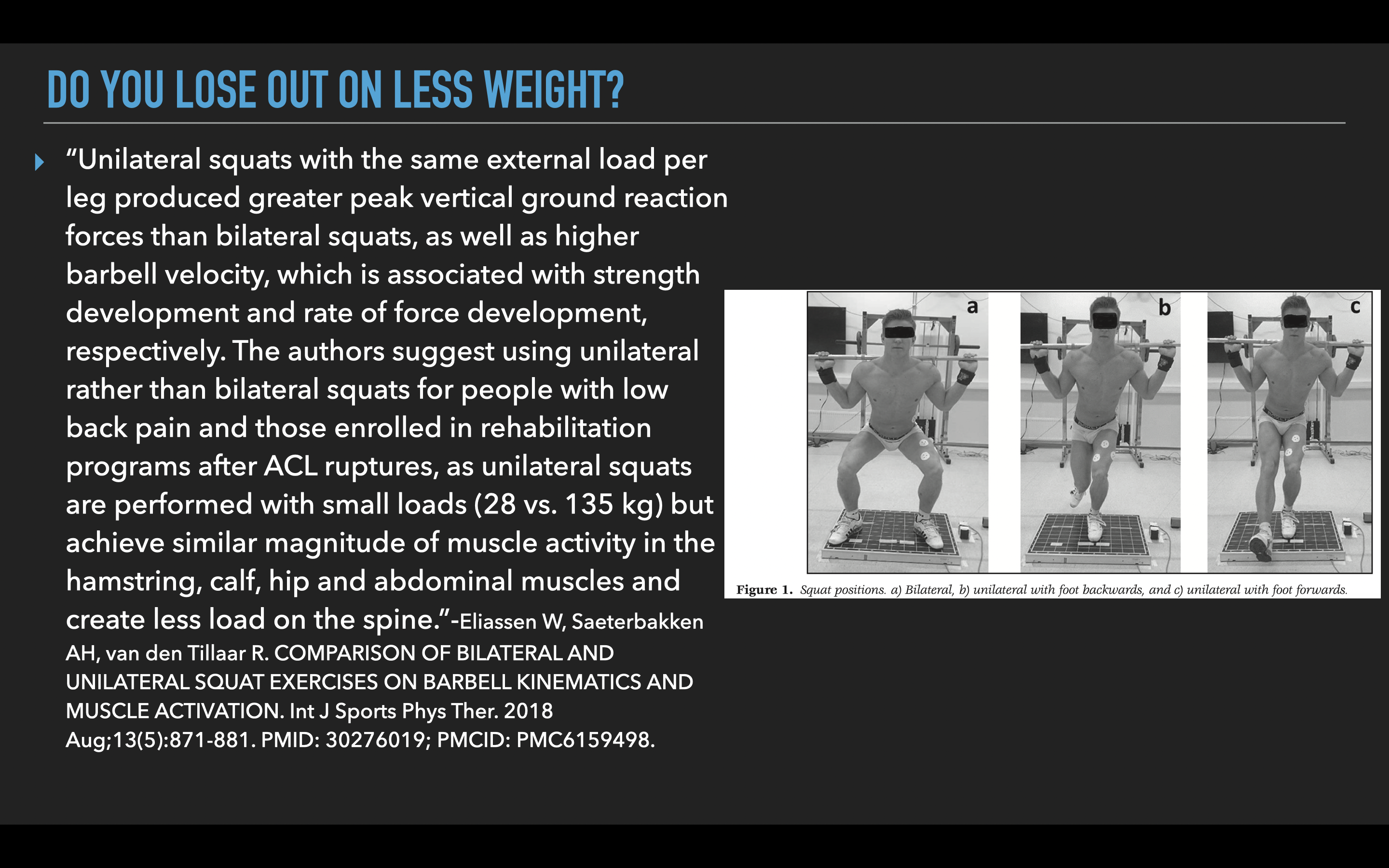The Better Squat For Strength, Muscle, & Mobility
2024-04-15

When it comes to something so foundational to strength training like the squat, is there anything left to say? I think there are some key points that people keep missing out on the squat, that if they REALLY want to listen to the science would make what they get out the squat so much more!
Like what?
Probably the most impactful is that research shows over and over again that back squatting has NO advantage over front squatting when it comes to building strength or muscle. A 2009 study states, “. The front squat was as effective as the back squat in terms of overall muscle recruitment, with significantly less compressive forces and extensor moments. The results suggest that front squats may be advantageous compared with back squats for individuals with knee problems such as meniscus tears, and for long-term joint health.”

Not all front squatting is the same either as we will cover!
A 2015 studies found, “Compared to the front squat version, back squat exhibited significantly greater trunk lean, with no differences occurring in the knee joint kinematics throughout the movement. Results may suggest that the front squat may be preferred to the back squat for knee extensor development and for preventing possible lumbar injuries during maximum loading.”
So, there are more costs, but no more benefits to back squatting over front squatting. Having the weight in front of the body is not only healthier for the low back, but often allows us to get better range of motion in the ankle, knee, and hip which is essential in building strength/muscle in the lower body, but also reducing risk of injury from having greater mobility. Since the ankle, knee, and hip have to work together to protect the knee, the more we get movement from all 3 the better health and fitness goals we can achieve.

This also means that performing movements like wedge squats isn’t great because it reduces the amount of dorsiflexion (pointing your foot towards you) that is needed to absorb forces in the squat. Wedge squats alter one of the key joints that the knee relies on for proper movement, but because ankle mobility is a big deal for a lot of people that is why they like to use an artificial substitute for ankle mobility. Instead, we should look how to progressively build the squat.
Teaching how to use the feet and core will go a long ways to improving how we squat as well as what we get out of it!
Loading The Squat
Most people get stuck trying to go heavier and heavier in their squat training because they don’t realize that they can alter the position of the load in the squat to build progression and build various qualities of the squat pattern. We can still load the squat and build strength, but challenge the body in a variety of ways as you will see below…
Better Ways To Build Strong Legs In The Squat
While the options I just gave above (while there are even more) can last people A LONG time in their training (especially when we add pauses and so forth) there is more we can do to build strong legs. That is to build to more single leg squat training. While many people think that single leg squats can’t be as good for strength and muscle because the weight is lighter, research actually shows us something quite different.

So, the concern over the single leg squat building enough strength or muscle doesn’t really seem valid. What IS an issue is how to progress people to more single leg squat training because people often make too big of jumps in stability.
One of the key ways we introduce more single leg squat training is through our sprinter stance. In taking an incremental change in body position we can make the single leg benefits more possible.
We can also change plane of motion and working in the frontal plane really allows us to build towards more single leg squat exercises.
Step ups and step downs are also great ways to build up the strength of the lower body, but achieve way more through the feet, ankle, hips, and core. So, what is the best squat? There is no one, but if you cycle these progressions into your training, you will find that not only do you get stronger legs from your squat training, but you also gain greater mobility and feel like you can move with strength. When you see how many ways you can build strength, stability, muscle, and mobility together, you start to see why we focus on movements over exercises!
Don’t miss saving 25% throughout DVRT (including our online certifications, courses, and workout programs) and when you invest in ANY of our Ultimate Sandbags/Water Bags, you will get our 12-week jump start program for FREE! Just use code “speical25” HERE
© 2025 Ultimate Sandbag Training. Site by Jennifer Web Design.






